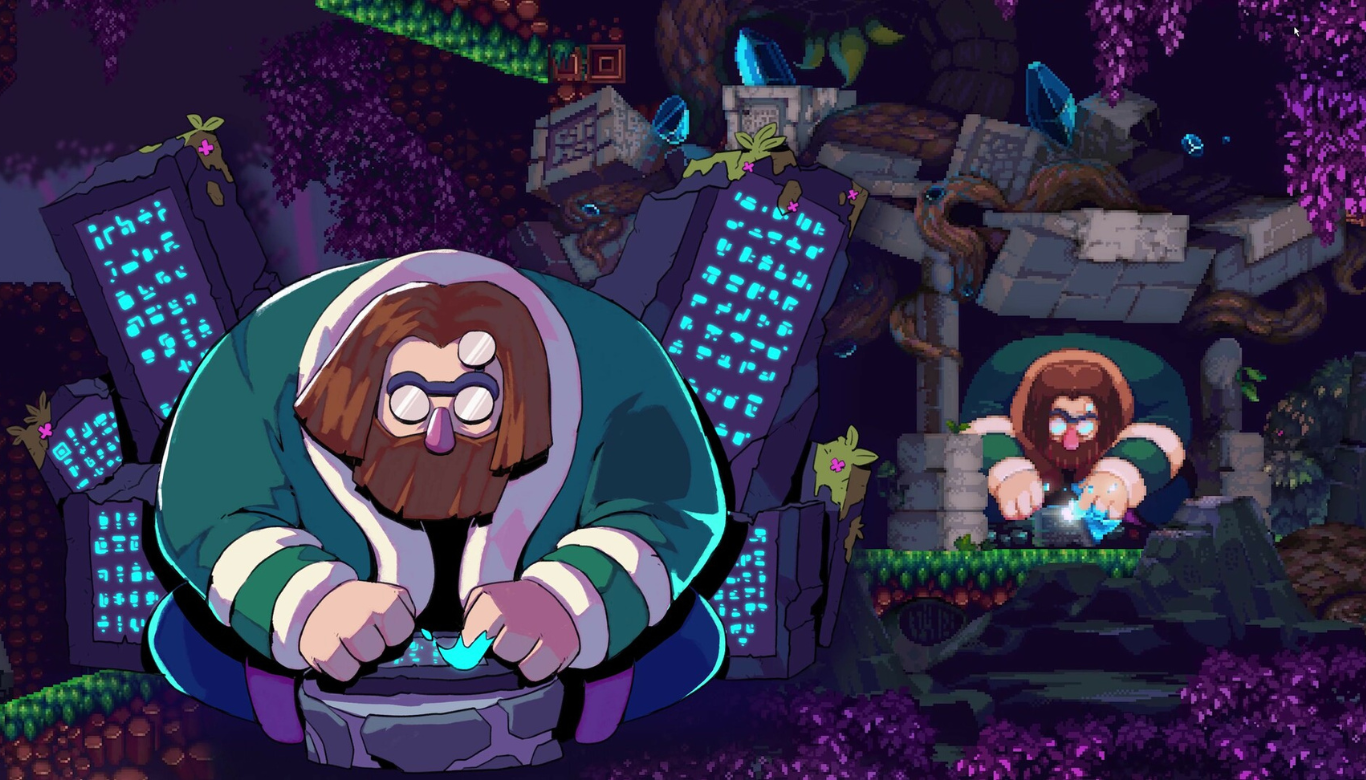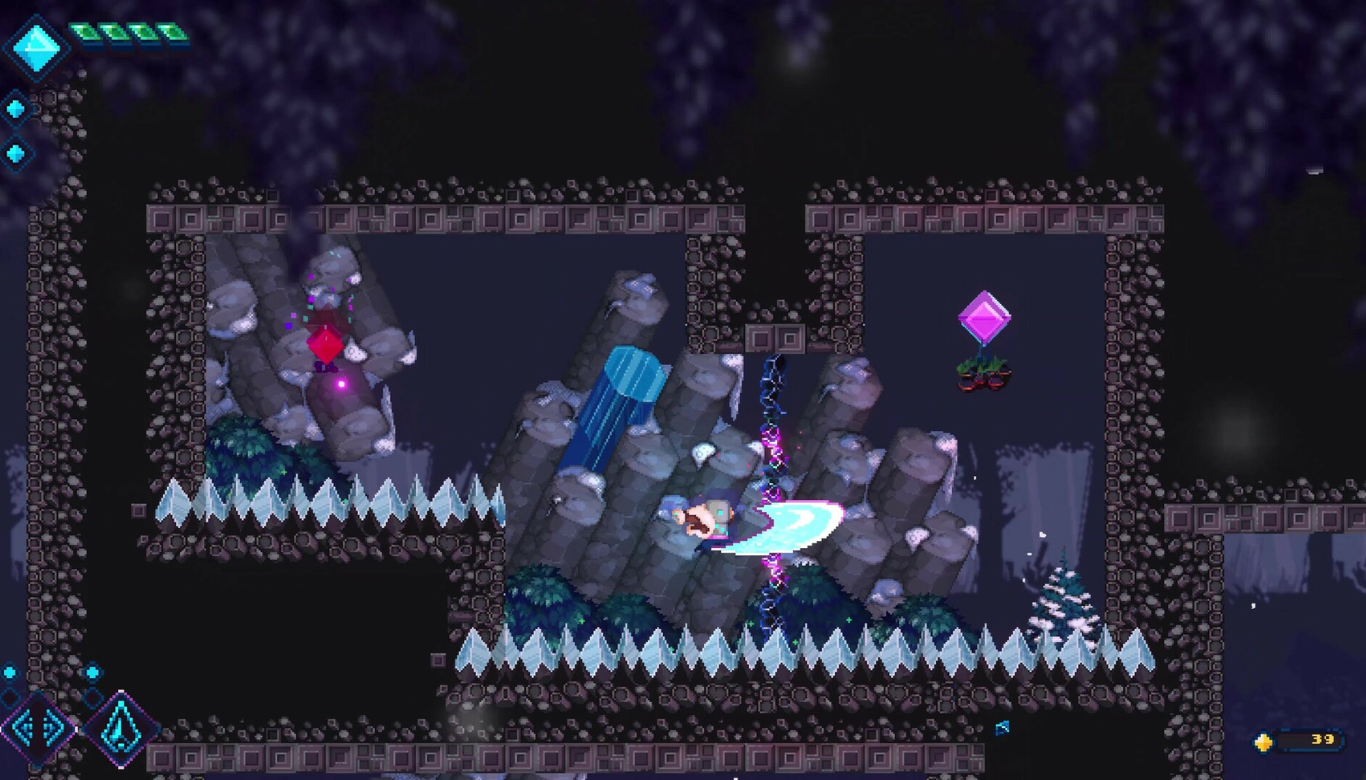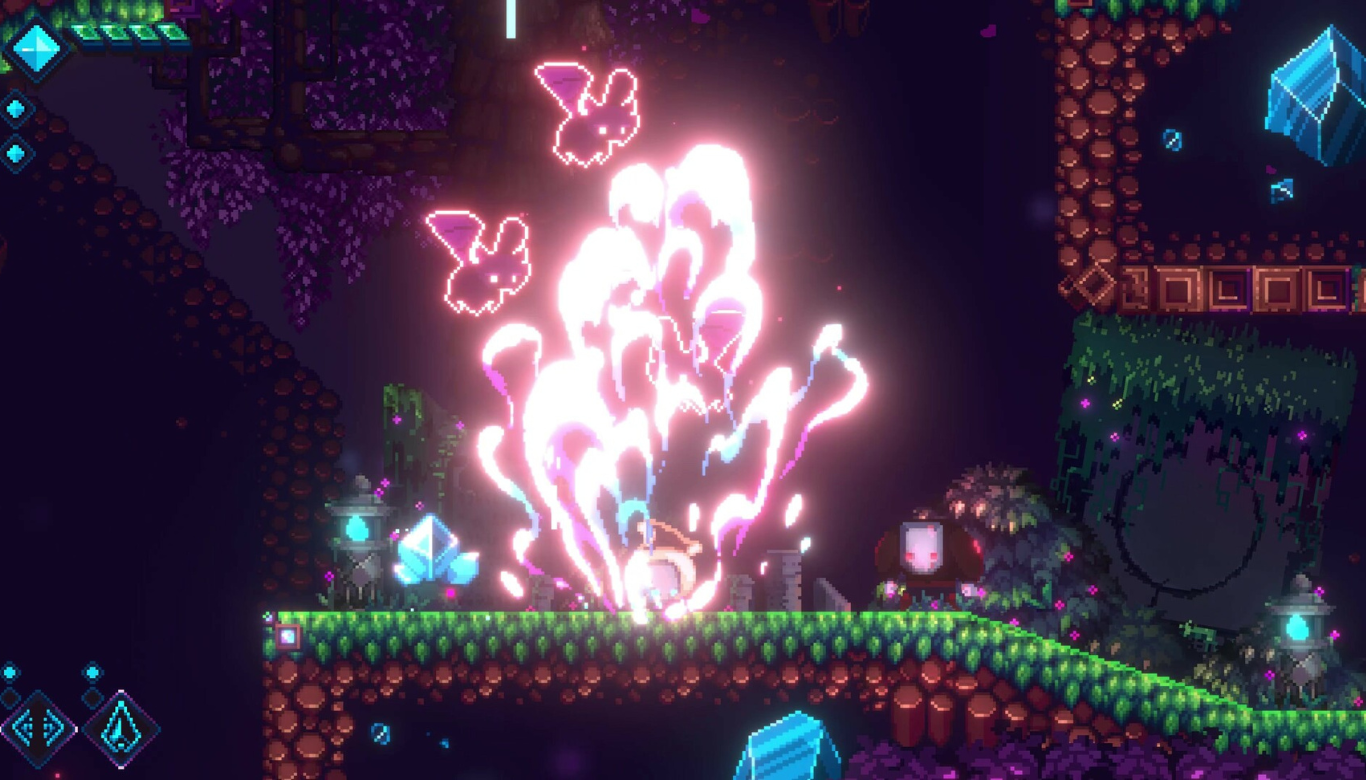
Introduction to LUCID
In the ever-changing world of game development, there are visionary creators who push the boundaries of imagination and technology. Eric Manahan, a prominent indie game developer, is among these innovative dreamers. With his latest creation, LUCID, he invites players to immerse themselves in a captivating world of shattered crystals and discordant punk aesthetics, where the lines between nostalgia and cutting-edge addictive gaming blur.
LUCID is not just a game; it's an immersive experience that skillfully intertwines stunning pixel graphics, action, and adventure to evoke a sense of gamer nostalgia with incredible design and unique soundscapes. In this exclusive interview, we delve into Eric's creative process, exploring the inspirations, challenges, and promises that have shaped LUCID into a highly anticipated game for genre enthusiasts.
In this special edition of TECH DREAMERS dedicated to LUCID, we discover how this indie game developer is poised to redefine the world of gaming with their unique blend of design and programming.
Join ERIC on the incredible Kickstarter launch of LUCID on Monday, September 18, 2023.
Join the revolution and passion for LUCID:
LUCID LINKS → https://tr.ee/GyDodi-z_i

Eric, please tell us more about the inspiration behind LUCID. What led you to create this shattered crystal punk world?
For LUCID, it was important to me to have a strong inciting incident, the Great Fall, that plunged the world of Aedyn into chaos and despair. The crystals that were exposed by the fall and proliferated after the demise of the Lucid Giant are sources of great energy, used by mankind for good and for not so good purposes. The story of LUCID is very much an adventure through this world, as Oenn attempts to put the shattered world to rights.

In LUCID, the main character, Oenn, absorbs abilities to enhance movement and combat. How did you come up with the idea to incorporate these mechanics into the game?
In games like Metroid and Castlevania, on your adventure you accumulate abilities that alter how you explore the world or how you deal with the challenges the game throws at you. It was vital to me that these two be combined into what I call “Crystal Arts,” which are tied both to traversal and combat. Not only does this give players a lot of license to inject their own style into combat encounters, it also means that platforming obstacles can be surmounted in a variety of ways, depending on the Crystal Arts players choose to focus on

The combination of carefully crafted pixel art with contemporary atmospheric elements in LUCID is impressive. Can you talk about the artistic design process of the game?
To me the idea of using modern elements to bring a classic looking pixel art game into a more contemporary style is emblematic of my entire approach to LUCID. Taking my inspirations and updating the look of 90’s side scrollers for a modern audience is the same process I use when I’m thinking about updating the mechanics of the game.

In your game description, you mention "Dissonance ." What role does this concept play in the story and gameplay of LUCID?
Dissonance is the antithesis of Harmony. The state of Harmony has been lost in the world of LUCID. I look forward to players uncovering more about these concepts when the get their hands on LUCID!

Music in video games can be a fundamental part of the experience. What kind of music can players expect in LUCID, and how does it complement the gameplay?
I think a great OST is a foundational part of the experience of playing a new game. And just with the art style and mechanics, I wanted to use new music that evoked the nostalgia for the golden age of platformers while achieving an atmosphere of optimistic melancholy on tracks from the absolute titans of retro gaming, from Chrono Trigger to Donkey Kong Country.

Did you collaborate with any specific composers or musical teams to create the soundtrack for LUCID?
I did! My fiancé Euna (Bearbot) has been making some of the amazing tracks you hear when watching any of the content I post. Likewise, a good friend of mine, Andrew Black, is also lending his talents. Between his atmospheric, surreal soundscapes and Euna's blood pumping, flow state inducing bops, players are in for a sonic treat!

LUCID promises an experience that seamlessly blends nostalgia with modern gaming. What aspects of the game evoke nostalgia, and how do you balance them with modern features?
Oh, I think it’s a top to bottom infusion of that nostalgic feeling. The tight controls, the evocative soundtrack, the art style, they all have their roots in the games I loved growing up. But I’ve also loved many games that have come out in recent years, and so I took care in building systems that complement the nostalgic style while bringing new ideas to the table. Active things like the Guard Break system, where successive shots of the Aura Pulse gradually weaken and stagger enemies, but also more opportunities for player choice, like the Talisman System. Players now expect to be able to play games in a variety of ways, and tailor their experiences to their preferred playstyle, and I wanted LUCID to offer that freedom in addition to a strong foundation of nostalgia.

Acrobatic obstacles and challenging bosses are key elements of gameplay in LUCID. How did you design these elements to keep players engaged?
I think we’ve seen in the past decade that players expect to be engaged and challenged. LUCID isn’t a game you can play with half your focus, and you’ll need to bring all of your skills and knowledge of your capabilities to conquer the challenges I’ve created for you. But the core is easy to learn mechanics that deepen as you master them over time. For instance, chaining Crystal Arts with my node-based traversal system feels great as you’re learning, but I’m going to throw increasingly complex and difficult combinations of obstacles and enemies at you as you go, so those early hours learning and practicing will be essential to success later on. As for the bosses, these are the big tests that ask you to prove what you’ve learned and practiced. And of course, if you’re stuck on a particular boss, you also have the freedom to go elsewhere and keep practicing and accumulating power before returning later once you feel better equipped to take them on.

Pixel art is a beloved visual style for many. What were your main influences in creating the art for LUCID?
I love the pixel art style of the games I played as a kid, the way the developers used the limitations at the time and created a new visual language. Games like Super Metroid, Megaman X, Donkey Kong Country, The Legend of Zelda: Link to the Past, to name only a few.

In LUCID, players fulfill a solemn promise. Can you give us a glimpse of the game's story and how it relates to this promise?
Oh, I think you’ll have to wait to play LUCID to find out what exactly calls Oenn to adventure!

What technical and engineering challenges were particularly interesting during the development of LUCID?
Developing the system in which the Pixel Art interacts with the environment and light was an interesting challenge that produced a really satisfying result.

Lastly, can you share the release date for LUCID? Fans are eagerly awaiting the opportunity to dive into this exciting shattered crystal punk world.
No hard answer just yet! The LUCID KICKSTARTER, launching September 18th (my birthday!) will heavily dictate the final scope of the project. But if I had to guess... I think 2025 would be a fair estimate. :)



